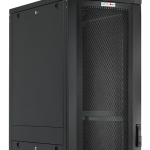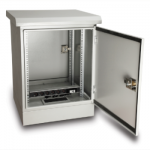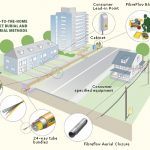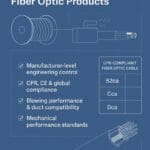15 Feb Fiber Optic Loss
Fiber Optic loss, As a supplier of fiber optic products, perhaps the most frequently asked question about fiber optic cabling testing is: “What is the maximum acceptable attenuation? ”Unfortunately, the answer is:“ it depends ”. But what does it depend on?

This is because it depends on who is performing the test and what stage of the project the Fiber Optic cable is being tested for. Most of our customers are installers who get paid to install, complete and certify cabling. As a result, they don’t necessarily have a vision of what the end customer expects to pass on the cabling once their job is done. Unless their plans have documentation of acceptable attenuation (optical loss), it is up to the installer to determine the correct value based on the details of each link tested. If the end customer wishes to operate a 10 gigabit Ethernet application, for example, the installer can refer to the standards for this application to determine the acceptable loss.
Finally, if the make and model of the assets that will be installed are known, it is possible to use the documentation of these devices to calculate the acceptable optical loss for the system. The wiring technician is rarely aware of the type of equipment that will be used. Therefore, this method is usually left to the network integrator or the end user.
In summary, there are three main methods that can be used to determine the acceptable attenuation of an optical fiber link.
- Optical budget calculations based on the characteristics of the installed cabling, without considering applications or assets
- Loss limits based on particular applications, typically Ethernet.
- Budget calculations based on active equipment that will be integrated into the network.
We will look at each of these situations in detail so that you can determine the acceptable limits for mitigations in all cases.
WIRING ACCORDING TO OPTICAL BUDGET – Fiber Optic Loss
Most wirers will use this method to determine the losses that will be acceptable for certifying the wiring after installation is complete. Using a photometer and light source or OLTS (Optical Attenuation Measurement Kit), level 1 certification can be performed against the normative limits for the cable and connectors. Both TIA and ISO cabling standards list acceptable loss limits for fiber optic components and these values can be used to calculate a loss budget. The advantage is that the installer does not need any knowledge about the future operational network to calculate the loss budget.
The IEC 14763-3 and ISO 11801 standards list the following transmission performance parameters for optical fiber.
(*) refers to the% of connectors meeting a specific criterion
Calculating the optical budget for cabling using the table above is really simple. To facilitate the process, IDEAL testers such as the LanTEK III with FiberTEK III modules have a built-in loss budget calculator allowing the user to enter values individually and automatically determine the total loss limit.
Take the example of a simple multimode cable 90 meters long according to ISO 118101, with a patch panel on one side and a workspace exit on the other.
USE OF APPLICATION SPECIFIC LIMITS
The fastest way to determine a loss budget is by knowing the application that the fiber must support. In this case, it is sufficient to simply consult the requirements for each application.
There are many resources available listing various requirements for different applications. You will find an excerpt from the TIA-568.0-D standard which lists the requirements for some common Ethernet applications.
The yellow part above highlights the requirements for 1000BASE-SX Ethernet (1Gb / s at short wavelengths). The maximum channel attenuation and length are listed for each type of fiber supported. In this case, for the OM1 62.5 / 125 fiber, the maximum authorized loss is 2.6dB and the maximum distance supported is 275 meters.
When using OM2 50/125 fiber, the loss and distance are increased to 3.6 dB and 550 meters respectively.
These charters facilitate the estimation of loss budgets as long as the application that will be launched on the fiber is known.
Fortunately, some fiber link certifiers such as LanTEK III / FiberTEK III integrate a database with these values so that the user can simply choose the appropriate standard so that the allowed limits are configured automatically.
CALCULATE OPTICAL BUDGETS ACCORDING TO FUTURE INSTALLED ASSETS
Finally, when the characteristics of active network equipment are known, the requirements of the latter can be used to determine the total budget.
Each asset such as SFP or GBIC transceiver modules have specifications for the output power and minimum receiver sensitivity. These data allow to know the maximum loss that the link can support in order to function correctly.
The output power of the transmitter is characterized by the performance of the transmitted TX signal. This specification is expressed in dBm or mW (not in dB). A typical asset will have an output power of around -20dBm. Do not be disturbed by the negative sign, it does not mean negative power. Indeed 0dBm is referenced to 1mW (milliwatt) of power, and a negative dBm value simply means less than 1 mW.
Note: dBm is an absolute power unit. In dB we compare the power from one level to another, it is relative.
A receiver generally has two characteristics: the sensitivity of the receiver and its dynamics.
The sensitivity of the receiver corresponds to the minimum detectable signal (below the signal will be lost) and the dynamics represent the range of sensitivity supported by the receiver without blinding it.
For example, a receiver with a sensitivity of -30dBm and a dynamic range of 20dB can detect optical flow over a range of -10 to -30dBm.
The diagram below should help you visualize the scenario.
Hereby I’d like to share with you Frequently Asked Questions and Answers related to Fiber Optic Loss are as below. Then we will discuss further about Fiber optic loss
- What is fiber optic losses?
The short answer is that Connector losses and insertion losses are the main factors in fiber optic, are the losses of light power resulting from the insertion of a device in a transmission line or an optical fiber. Multimode connectors will have losses of 0.2 to 0.5 dB (0.3 general).
- What causes loss in fiber optics?
Internal fiber optic loss, also generally referred to as endogenous attenuation, is caused by the fiber optic cable itself. There are two sources of attenuation. One is the emission of light and the other is scattering. Light absorption is a significant explanation for the failure of fiber optics during optical transmission.
- What is acceptable dB loss for fiber?
For single-mode fiber, the loss is around 0.5 dB per km for 1310 nm sources, 0.4 dB per km for 1550 nm. (1.0 dB/km for premises/0.5 dB/km at either wavelength for outdoor plant max per EIA/TIA 568) Which is approximately equal to a loss of 0.1 dB per 600 (200m) feet per 1310 nm, 0.1 dB per 750 feet (250m) per 1300 nm.
- How do you calculate fiber optic loss?
To calculate the loss in the fiber optic cable, multiply the length times the attenuation at each wavelength: 0.3 km x 3.5 dB/km @ 850 nm = 1.05 dB loss and 0.3 km x 1.5 dB/km @ 1,300 nm = 0.45 dB loss. For the connector loss, 3 connectors x 0.75 dB = 2.25 dB.
- What is a good fiber dB reading?
The range measured will be determined by the output power of the source in the device and the sensitivity of the detector. For multimode fiber, OLTS using an LED source would typically measure over a spectrum of 0 to 30 dB, which is more than sufficient for most multimode cable systems with a loss of less than 10 dB.
- What is fiber loss budget?
The words ‘power budget’ and ‘loss budget’ are sometimes misunderstood. The power budget relates to the amount of fiber optic cable plant failure that can be tolerated by a data link (transmitter to receiver) in order to function properly. The failure budget is the amount of loss that the cable plant should have if it is properly built.
Construction Products Regulation (CPR) for Cables
CPR for cables (Construction Products Regulation) for cables became a legal requirement in July 2017. CPR for fiber optic cables is having an intended use for permanent installation in buildings and c...
No comment 0 LikesOptical Fiber
What is optical fiber? We are used to the concept of moving knowledge in numerous ways. A wire cable transports the sounds from our speech into a socket on the wall and is borne by another cabl...
No comment 8 Likes19″ Rack Cabinet
What is a 19” Free Standing Rack Cabinet? 19” free standing rack cabinets provide a robust, cost-effective enclosure solution. PDU mounting or connectivity on both the front and rear of the cabinet. T...
No comment 0 Likes5 Fan Facts About the Fiber Optic Cables
Fiber optic cables are a type of cable that use glass or plastic fibers to transmit data. Here are some interesting facts about fiber optic cables: Speed: Fiber optic cables are capable of transmittin...
No comment 4 LikesWhat is fiber optic cable
Fiber optic cables are an innovative communication medium that transmit data using light instead of electrical signals. Designed for efficiency and speed, these cables leverage thin strands of glass o...
No comment 4 LikesHow Much Does Fiber Optic Cable Installation Cost in 2025?
Fiber Optic Cable Installation Cost | Reduce Costs with Cable Blowing Machines – UPCOM How Much Does Fiber Optic Cable Installation Cost? Updated guide for telecom and infrastructure professionals (20...
No comment 4 LikesIP55 Outdoor Cabinet
We found out that there is no enough information about 19” IP55 Outdoor Cabinet and thus we will investigate it. If you are reading this article, then you are probably planning to make a procurement s...
No comment 3 LikesFTTH installation Technologies
FTTH installation technologies Table of Contents Innovative approach to FTTH installation Technologies…1 Infrastructure Sharing…2 Duct sharing in France…2.1 Sewer pipes…2.2 Cle...
No comment 1 LikeCable Blowing by Pressurized Air / Fiber Optic Cable Blowing Procedure
Cable Blowing (Sometime called air assisted cable blowing, Cable Blowing by Pressurized Air, air blowing, jetting and all these words are describing method of cable blowing with pressurized air) Cabl...
No comment 1 LikeWhat Distributors Should Know Before Importing Fiber Optic Products: A Technical & Manufacturer-Level Guide
A technical guide for distributors importing fiber optic products, covering manufacturer-level engineering standards, CPR compliance, blowing performance and key quality checks....
No comment 0 Likes










